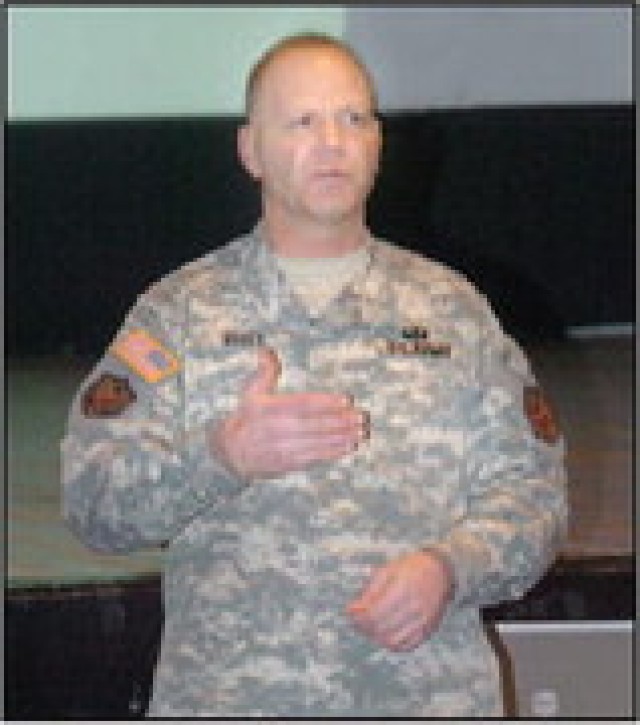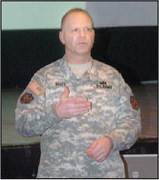FORT BELVOIR, Va. - Despite the many successes printed and televised about the Army during its proud history, of ficials are all too aware of the dark cloud hovering above them.
For the fourth consecutive year, suicides are on the rise. In 2008, the Army experienced 128 con firmed suicides - up from 117 the year before. At such an alarming rate, Gen. Peter Chiarelli, vice chief of staff, issued an executive order calling for greater emphasis on recognizing suicidal behavior among Soldiers.
Chaplain (Col.) Gerald Stone, who works at Fort Belvoir's Family Life Center, has served as a long time counselor on suicide aware ness and spoke at last week's suicide prevention stand down at the installation's Wood Theater.
As one of its duties, Stone said the Chaplain's Office is involved in educating Soldiers on the various warning signs associated with suicide. These include changes in one's behavior, eating habits and personality.
According to him, while the Army has long been aware of the stresses involved with being a ser vicemember, senior leaders can expect a more hands-on role when approaching someone in their unit who may be contemplating suicide.
"This is not business as usual. It's a big change in the way we do training," Stone said. "The Army wants to enhance the intervention skills of its leaders and junior Soldiers. It's very important to have open dialogue. This approach has the potential to energize peo ple on the topic and get them talking."
To succeed in prevention, the Army is stepping up its efforts on training and education. During last week's mandatory four-hour training course, Stone and others got a glimpse of a new interactive DVD that will help Soldiers recognize the symptoms associated with suicide and how to act as a facilitator in getting those the help they need.
Sgt. Brian Dileo, who works with the DeWitt Healthcare Network's Behavioral Health Department, said there are several factors that can contribute to one's struggle with depression, such as social, financial and even cultural issues.
In his opinion, the DVD, entitled "Beyond the Front," is just another outlet that helps Soldiers identify any red flags within their unit.
"In my six years in the Army, this is one of the best things I've seen in terms of suicide preven tion. It uses real-life actors to make its point and is geared to ward Soldiers E-6 and above," Dileo said. "The idea is for leaders to initiate a discussion with oth ers in their unit because, after all, they're the ones sitting right there with them. They're in the best po sition to help and the first ones to recognize any problems with a particular Soldier's behavior or performance."
Given last week's response, which was the first of three phases on suicide training this year, Stone was happy to see a high level of interest on the sub ject. Though, he admits some chalA,Alenges still remain for the road ahead.
"Right now, we have a learning curve. It's a matter of getting everyone to understand their roles, in addition to absorbing the content being presented to them," Stone said. "The most important thing to remember is they're not alone and resources are available to help them work everything out. If we get people to be more open, things will get better."
In light of the enhanced Army wide effort on suicide prevention, Stone said chaplains will continue to assist in the training and that he's not aware of their role ever changing. Stone added that phase two of the mandatory training will end in July. Phase three, which serves as a review of the previous material, will follow later in the year.


Social Sharing